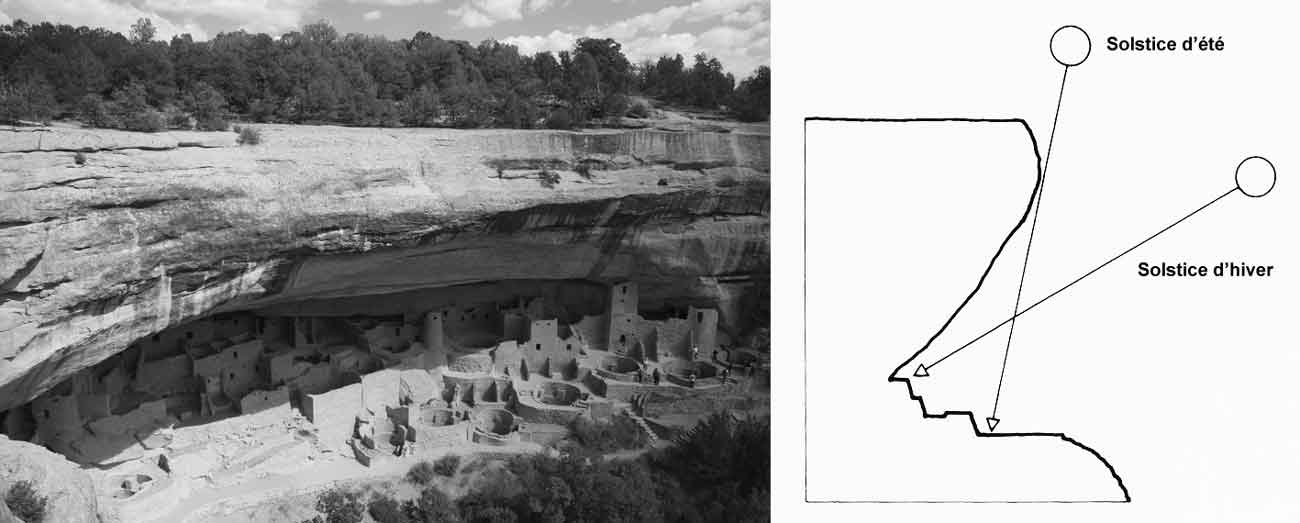
December 21 is the winter solstice.
For many, December 21 is associated with Christmas and delaying gift buying.
In many cultures, this date had considerable importance and was celebrated with festivals.
It was also a landmark for builders.
Many towns and vernacular constructions were designed based on the study of sunshine at the winter solstice.
This is particularly the case with the constructions of the Pueblo Indians in New Mexico and Colorado.
These constructions were designed by the American architect Ralph Knowles.
In the early 1970s, Knowles began analyzing the traditional architecture of the Pueblo villages of Chaco Canyon, Pueblo Bonito, and Mesa Verde (left image).
Some houses in these villages sometimes date from the 10th century.
Using models integrated into heliodons, he showed that the constructions of these villages benefited greatly from winter solar input (image on the right).
Their corbelled morphology is also optimized and the openings are carefully oriented to the south.
He also showed that these constructions were perfectly protected from solar radiation at the summer solstice.
Through this study, Ralph Knowles demonstrated that the path of the sun at the solstices had been integrated into the design of these vernacular villages, making it a model of bioclimatic design.
We have forgotten the lesson of the Pueblo villages, just as we have forgotten the importance of the winter solstice.
Sources: R. Knowles, B. Anderson.
Images: Wikimedia (left), R. Knowles, trans. C. Gaillard (right).